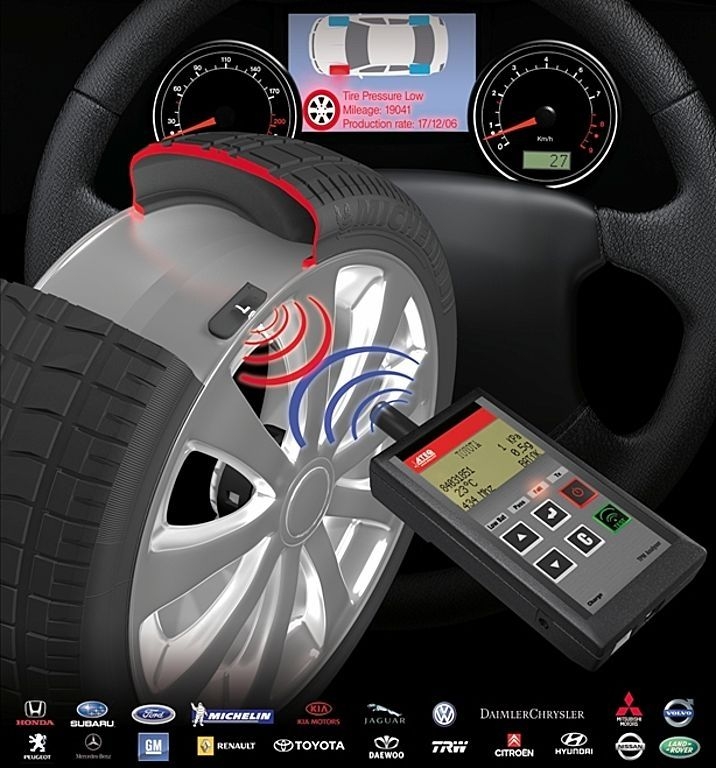How the System Works
A typical TPMS (Tire Pressure Monitoring System) monitors the air pressure in the tires with a wheel mounted sensor. This type of TPMS can detect actual pressure levels and transmit the information to the driver more quickly. Tires are monitored individually by sensors attached to a special tire valve, or strapped to the drop center of each wheel. Each sensor monitors and transmits tire pressure and temperature every few minutes. The temperature is monitored to compensate for cold and warm pressure variations. In order to reduce battery consumption, the sensors revert to a “sleep” mode when the vehicle is parked or not moving. During this “sleep mode,” sensors may only activate and transmit signals about every 45 minutes, if at all.
One of the best ways to keep the TPMS system operating properly is to follow the recommendations outlined in your vehicle’s owner’s manual.
Always keep your tires inflated to the pressures indicated on the tire placard. The placard is located on the door jamb or in the glove box. This will allow the tires to perform efficiently. The tires should be rotated as outlined in your owner’s manual every 7,500 miles or every other oil change.
Proper tire inflation is essential for safe and efficient vehicle operation. Safety experts estimate that 25 percent of passenger vehicles are operated with tires that are under inflated. Vehicles with properly inflated tires experience optimum ride and handling characteristics, shorter braking distances, longer tire life, and improved fuel economy.
SAFER OPERATION
When the TPMS warning lamp on the instrument panel illuminates while driving, it means that the system has detected at least one tire with a pressure below the accepted minimum psi for the vehicle. The tires should be inspected and the tire pressure checked as soon as possible. In most cases, the lamp will extinguish after the tires are properly inflated and the vehicle has been driven at moderate speed and distance.
WHAT ELSE IS AFFECTED?
There is a close working relationship between your tires and other mechanical systems in your vehicle, such as the wheels, brakes, shock absorbers, steering and suspension systems.
Any service procedure requiring the removal of the wheels may require that the TPMS system be reset, or recalibrated, depending on the type of system the vehicle uses.
IMPORTANT CONSUMER INFORMATION
WHEN TIRES ARE SERVICED
When reinstalling the sensor, it is suggested that the locknut, gasket and valve core be replaced and torqued to the proper specification. It is also necessary to use the proper valve cap as it is also an integral part of the system.
It may be necessary to reprogram the TPMS when the tires are rotated, when a new sensor is installed, or after the vehicle loses power. This usually requires a reset tool and may involve the use of a special magnet and scan tool. Refer to the vehicle service manual to properly reprogram the TPMS.
Things to watch for
Tire tread depth measures 2/32nds of an inch or less means replace tires
The correct pressure for your tires is the pressure listed on the Placard, NOT what is listed on the tire itself
Tire pressures should be checked (cold) on a regular basis. A cold tire is one that has been driven for less than one (1) mile.
With radial tires, it is usually not possible to determine under inflation by visual inspection
Proper wheel alignment adjusts the angle of the wheels so they are positioned correctly relative to the vehicle’s frame and maximizes the life of your tires

Tire Pressure Monitoring Systems (TPMS)
by
Tags:

Leave a Reply